A degree of a monomial is the number of times a variable occurs as a factor in a monomial.
Example 2:
Example 4:
Binomials contain two terms. 2y + 17 2b - 5
Trinomials contain three terms.
Example 3:
Our answer shows that the degree of the polynomials is 3.
Remember, the number beside the variable is called the coefficient.
Multiply the coefficients.
Then add the exponents.
Remember that the commutative axiom says: ab = ba.
In this case, 4(-2) = -2(4), which equals -8.
The associative axiom says: (a + b) + c = a + (b + c), or (ab)c = a(bc).
In this case,
Step 1: Combine the a variables into a group and combine the b variables into another group.
Step 2: Apply the rule of the exponents for multiplication by adding the exponents.




Some Helpful Tools
Math: Polynomials - Tutorial
This section will cover the fundamentals and rules of simplifying polynomials.

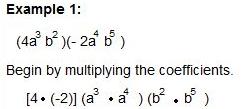

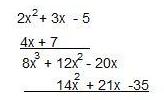
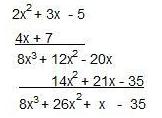
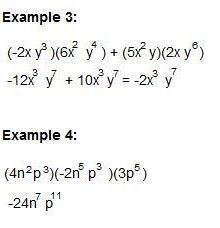


Monomials and Polynomials
In order to understand polynomials, it is important to become acquainted with monomials. A monomial is an expression of a number, a variable, or a product of a number and one or more variables.
Examples 1:
The monomials below are not similiar.
Example 5:
Adding and Subtracting Polynomials
The operation sign in front of the coefficient will tell whether you need to add or subtract.
Example 1:
Since the terms are similiar or alike, the polynomial can be simplied.
Subtracting polynomials means that you add the opporsite of that polynomial.
Then simplify.
Example 2:
Multiplying Polynomials
Multiplying monomials requires adding the exponents when their bases are alike.
Use the commutative and associative axiom when multiplying polynomials.
An axiom is a statement that is thought to be true.
The commutative axiom says that:
a + b = b + a, or
ab = ba
The associative axiom says that:
(a + b) + c = a + (b + c), or
(ab)c = a(bc)
The rule of exponents states that for all positive integers with the same base, the variable x is the base number.
Three Axioms and a Rule
The distributive axiom says that:

(Step 1)
(Step 2)
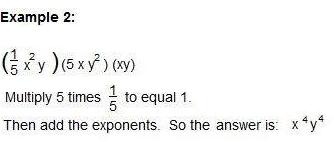
Multiplying a Polynomial by a Monomial
We will use the distributive axiom to simplify the expression.
Example 1:
The distributive axiom says that:
a(b + c) = ab + ac, and
(b + c)a = ba + ca
a(b + c) = ab + ac, and
(b + c)a = ba + ca
When the distributive axiom is applied, you will multiply the 4x value times everything in the parentheses.
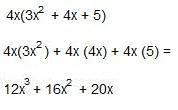
Add exponents when multiplying polynomials.
Example 2:
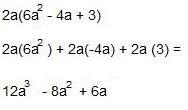
Multiplying Two Polynomials
Let's see what happens when two polynomials are multiplied.
Example 1: (4x + 7)(2x + 3)
Use the distributive axiom to multiply the polynomials. The combine like terms.
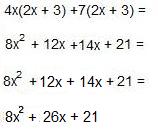
Example 2:
You can solve the problem below in vertical form.
Multiply each term by 4x.
Multiply each term by 7.
Add the terms.
Notice that the terms are in decreasing order.
The prefix mono in the word monomial says that there is only one term in the mathematical expression.
The prefix poly in the word polynomial says that there are many terms in the mathematical expression.
A polynomial is the sum of monomials.
There is a degree of 5 in x, a degree of 3 in y, and a degree of 1 in z.
A degree of a polynomial is the highest of the degrees of its term after it has been simplified.
Monomials may be called similar even if the coefficients are different.